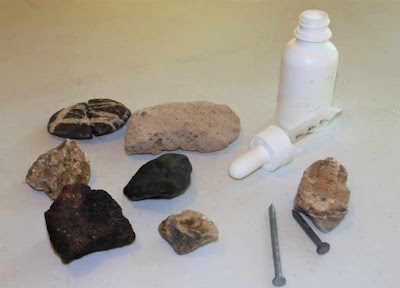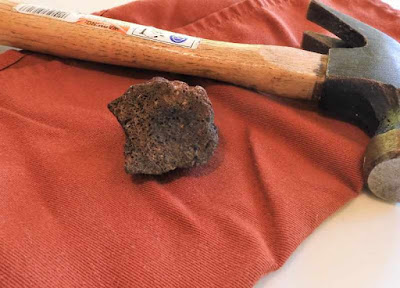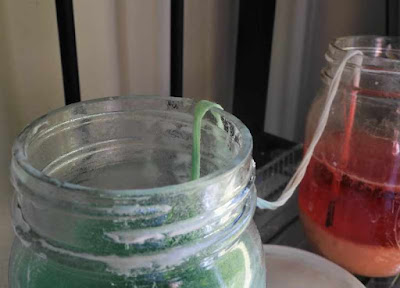Science With Rocks
Ready to add some geology activities to your day?
Last week, I shared a list of 15 different ways that people use rocks. Now it's time to explore some hands-on science projects!
One of the first questions people ask about a rock is, "What is it?" So, start off your STEM projects by putting together a rock identification kit. Most rock identification kits include tools to test rocks and find out their properties. You can put your own kit together using these tips from The Barefoot Homeschooling Mom.
Some rocks you can identify in a few easy steps using an acid test, a scratch test, or a density test. The scratch test is particularly helpful for finding out a rock's hardness and telling the difference between several common types of rocks.
While the kits above use vinegar as their acid (for safety reasons), most scientists would use hydrochloric acid. If you are bored by the old vinegar and baking soda trick and are able to use a stronger acid safely, you can test sedimentary rocks by dripping hydrochloric acid on limestone to watch it fizz, using this experiment from Preschool Powol Packets.
If you have older kids and want to practice some math skills, you can also explore density in more depth by comparing several rocks to see which is denser, using this science lesson from Blog She Wrote.
Rockhounds and scientists alike often have to break rocks open to study them more closely. This post from Fantastic Fun & Learning discusses allowing even preschool kids to use real tools to break apart rocks for a hands-on activity. Fun tip: safety glasses are extremely important when you are breaking hard objects, but we've also found that covering the item in a cloth napkin or kitchen towel can keep pieces from flying everywhere, meaning less mess to clean up afterwards.
If you are teaching younger kids to use a rock hammer, you'll probably want to use softer rocks that will break or crumble relatively easily. You could use the scratch tests mentioned above to identify softer rocks like chalk or soapstone and use those for this experiment, or you can buy sets of geodes online and break those apart to see what crystals have formed inside the rocks.
For older kids, you can use some of these suggestions for picking a good rock hammer and using it effectively. Plus, the safety tips always apply at any age!
It's not as loud or fast as breaking rocks with a hammer, but rocks on the surface of the earth are weathered or worn down over time by wind, rain, heat, and cold. This is usually a very slow process, but you can try weathering "rocks" yourself with this science experiment from Science Buddies.
Ready to make your own rocks? Practice creating your own metamorphic rocks using play dough or clay with this fun project from The Barefoot Homeschooling Mom.
What about growing a geode? Table Life Blog explains how to use borax and eggshells to create crystalized "rocks."
Or, if you want to dive a bit deeper into rock formation, the National Park System explains how to use baking soda or Epsom salts to grow your own stalactites. If you want to dress this experiment up a bit, you can add food coloring, like we did in the image below.
Bonus points if you use this project to talk about capillary action and explain how the string draws the liquid out of the jar!
Finally, for a cooking project, party ideas, and a book club, check out Hide the Chocolate's nature book club on rocks.
If you are looking for a more structured lesson plan focused on rocks, I recommend checking out Preschool Powol Packet's geology unit study.
To add a literacy unit, you can combine these science activities with a number of fun children's books. I've put together a list with all of my favorite children's books about rocks and geology. My picture book, Can a Rock Grow?, explores the shapes rocks form and the ways they change over time, and you can watch a read-aloud video of it below. You can find more information about it here, and even get a couple scavenger hunts and an activity page for creating your own rock journal.
What are your favorite rocks & geology projects? Share them in the comments! I'd love to try them out with my own kids!






Comments
Post a Comment